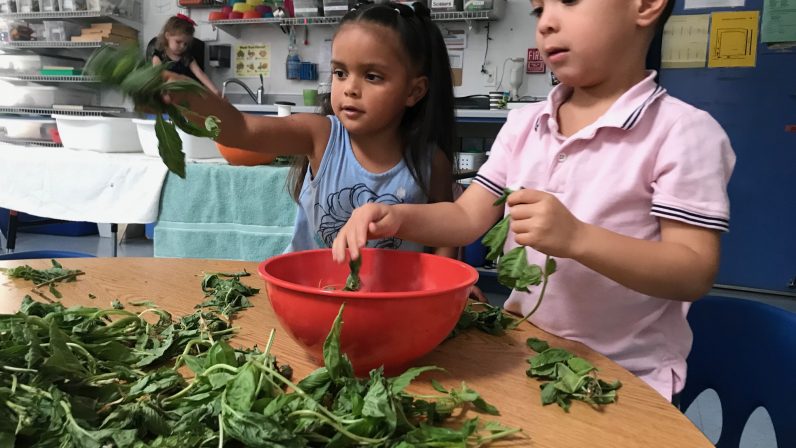The scent of basil is a sure sign that our nutrition study is underway. Coincidentally, as food nutrients dominated conversation in classrooms, I came across a new term— psychological nutrients. My ears and mind perked up, wondering what this idea could possibly mean. It came to me in the same way I absorb most new food for thought, through a podcast. The individual being interviewed was Nir Eyal, a professor at Stanford’s Graduate School of Business “He’s the author of international bestseller, Hooked—How to Build Habit-Forming Products. His upcoming book, Indistractable—How to Control Your Attention and Choose Your Life, is a guidebook for getting the best of tech without letting it get the best of us.”
When it came to the part of the interview where he was discussing the pros and cons of technology with children, he talked about why kids become obsessed with video games. This is where psychological nutrients come in. As he said in another conversation, “The psychological nutrients children need for mental well-being: a sense of mastery, autonomy, and relatedness…If they don’t receive psychological nutrients in the real world, they will look for them in the virtual world.”
Psychological nutrients are explored further in an article from Nir’s website Nir and Far: “According to Drs. Edward Deci and Richard Ryan, people need three things to flourish. We look for competence — the need for mastery, progression, achievement, and growth. We need autonomy — the need for volition and freedom of control over our choice. And finally, we strive for relatedness — the need to feel like we matter to others and that others matter to us. Unfortunately, when considering the state of modern childhood, many kids aren’t getting enough of these three essential elements.
School, where kids spend most of their waking hours, is in many ways the antithesis of a place where kids feel competence, autonomy, and relatedness. There, kids are told what to do, where to be, what to think, what to wear, and what to eat. Alarms and bells orchestrate their movements with farm-chattel precision while teachers opine on topics students could care less about. If they’re bored and want to go, they’re punished. If they want to learn something else, they’re told to be quiet. If they’d like to go deeper on a topic, they’re prodded to stay on track. Of course, this isn’t every student’s experience and different countries, schools, and teachers use different approaches to educate kids. But while some argue discipline and control provide structure, it’s clear why teachers and students might struggle with motivation in the classroom.”
Nir’s psychological nutrients are definitely congruent with the Seed approach to education. Built into everything we do to develop competence is regular practice in basic skills, such as taking the lids off of lunch containers and returning them to the lunch box when finished, or learning to cross the monkey bars. Even our youngest toddlers are given invitations to make choices, fostering autonomy, by deciding if they need a toy “for one minute or two minutes.” And most importantly, relatedness is promoted between children in classrooms, with teachers, and among parents of the Seed. We want all children to know they matter. Our intention is to include all three nutrients in everyday life, so the real world will feel as enticing as any virtual world could ever possibly be.

